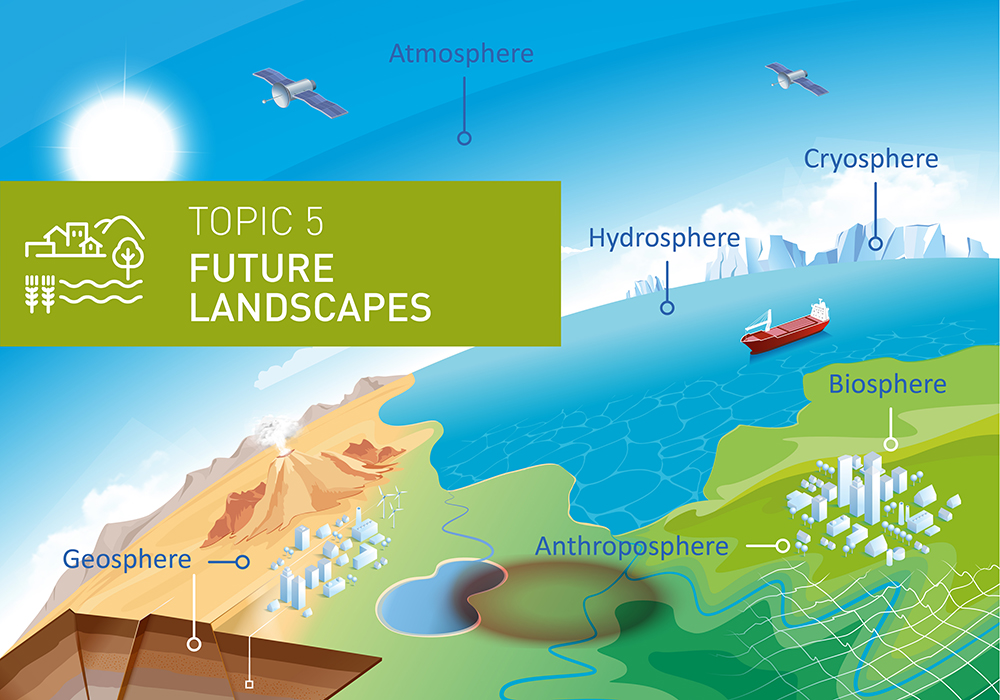Topic 5: Landscapes of the future – preserving biological diversity, water resources, and ecosystems

“For the interplay between the influence of humans and the natural dynamics of landscapes to function, we must understand what the natural and socioeconomic drivers in terrestrial ecosystems are.”
Bernd Hansjürgens, Helmholtz Centre for Environmental Research – UFZ, Speaker Topic 5
Unspoiled nature and ecosystems as part of our landscape are essential for human existence and social development. They provide clean water, supply food, materials, and resources, store CO2, buffer us against extreme events like floods, and are places of recreation. A whole host of varying demands are placed on landscapes – in both rural and urban areas. They need to fulfil a range of purposes, and for this, a functional interplay between human influences and the natural dynamics of landscapes is a prerequisite. However, this dynamic balance is increasingly at risk. Landscapes are suffering as a result of global population growth and the increasing demand for raw materials, energy, and water. This process is aggravated by climate change.
To understand terrestrial ecosystems, we study how individual parts of these complex systems influence each other, what the natural and socioeconomic drivers are, and how political decisions are made that affect the environment, whether positively or negatively. Only with this knowledge can we succeed in maintaining the balance between the various landscape functions. We want to assess the consequences of resource use on the environment and human health and develop strategies that will enable landscapes to perform these functions.
In order to gain this understanding, we first need comprehensive long-term data. To this end, we run large field experiments over long periods of time, such as the GCEF experiment into climate and land use, observatories like the TERENO monitoring network for terrestrial environment research, and mobile observation systems like MOSES, which allow us to follow extreme events quickly and flexibly.
A further cornerstone of our research involves producing analyses and model scenarios, which are used to illustrate alterations in the Earth’s surface in times of rapid climatic change. This work serves to help us understand how terrestrial ecosystems, landscapes, and freshwater resources respond to increasing levels of stress. It is our intention that our research on the landscapes of the future will contribute not only to a new generation of high-resolution forecast models but also to the LandTrans landscape simulator.
Based on an understanding of processes and a well-grounded pool of data, the purpose of this simulator is to evaluate management options and develop the basis for recommendations for political action aimed at preserving multifunctional landscapes.
